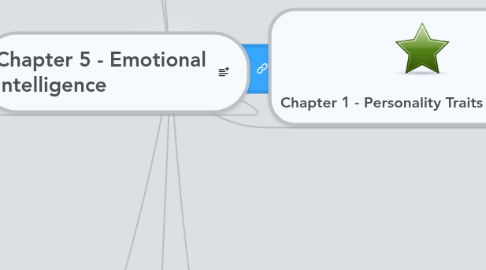
1. Chapter 4 - Influence Motivation
1.1. Equity
1.1.1. Outcomes/Rewards
1.1.1.1. What the staff receives
1.1.1.1.1. Salary/Bonus/Commission
1.1.1.1.2. Promotion/Awards
1.1.1.1.3. Intangible Rewards:Praises/recognition
1.1.2. Work Input
1.1.2.1. Contributions of the staff
1.1.2.1.1. Performance, Achievements
1.1.2.1.2. Skills,Experiences,effort
1.1.2.1.3. Intangible Input: Teamwork, reputation
1.1.3. Fair
1.1.3.1. Equitable rewards, not equal rewards
1.2. Victor Brooms Expectancy
2. Chapter 3 - Motivation (staff)
2.1. Motivation?
2.1.1. McClelland's Learned Needs Theory
2.1.1.1. Need for achievement (nAch)
2.1.1.1.1. Strong need for achievement
2.1.1.1.2. Love challenging goals
2.1.1.1.3. Strive to succeed
2.1.1.2. Need for affiliation (nAff)
2.1.1.2.1. Build & Maintain close relationships
2.1.1.2.2. Avoids any conflict or confrontation
2.1.1.2.3. Conform's to other's wishes
2.1.1.3. Need for power (nPow)
2.1.1.3.1. Power for personal gains (Personal Power)
2.1.1.3.2. Power to help others (Social Power)
2.1.2. Goal-Directed Behaviour
2.1.2.1. Arousal
2.1.2.1.1. Drive/Energy behind action
2.1.2.2. Intensity
2.1.2.2.1. Putting in effort on choice
2.1.2.3. Direction
2.1.2.3.1. Choices made to achieve goal
2.1.2.4. Maintenance
2.1.2.4.1. Keeping up the effort.
2.1.3. Maslow's 5 Basic Types Of Needs
2.1.3.1. Self-Actualisation
2.1.3.1.1. Desire to be true to own nature
2.1.3.2. Esteem
2.1.3.2.1. Wanting self-esteem or respect of others
2.1.3.3. Social/Belongingness
2.1.3.3.1. Wanting to free from loneliness
2.1.3.4. Security
2.1.3.4.1. Wanting to free from physical or emotional harm
2.1.3.5. Physiological
2.1.3.5.1. needs vital for survival
2.1.4. Intrinsic Motivation
2.1.4.1. Sense Of Meaningfulness
2.1.4.1.1. Opportunity to accomplish
2.1.4.2. Sense of Competence
2.1.4.2.1. Exceeding personal standard
2.1.4.3. Sense Of Progress
2.1.4.3.1. Efforts are showing results
2.1.4.4. Sense Of Choice
2.1.4.4.1. free to use own judgment
2.2. Herzberg's Two Factor Theory
2.2.1. Motivators
2.2.1.1. No Satisfaction
2.2.1.1.1. Jobs that do not offer achievement
2.2.1.2. Satisfaction
2.2.1.2.1. Jobs offering achievement
2.2.2. Hygiene Factors
2.2.2.1. Dissatisfaction
2.2.2.1.1. Jobs with poor company policies
2.2.2.2. No Dissatisfaction
2.2.2.2.1. Jobs with good company policies
3. Chapter 5 - Emotional Intelligence
3.1. Improving EI
3.1.1. Social Awareness
3.1.1.1. Empathy; understanding the emotions of others and their impact on relationships
3.1.1.2. Organisational Awareness
3.1.1.3. Empathy
3.1.2. Self-Awareness
3.1.2.1. Understand our emotions and their impact on ourselves and others
3.1.2.2. Emotional Self-Awareness
3.1.3. Self-Management
3.1.3.1. Self-regulations;thinking before acting and staying in control of our emotions
3.1.3.2. Emotional Self-Control
3.1.3.3. Transparency
3.1.3.4. Adaptability
3.1.3.5. Optimism
3.1.4. Relationship Management
3.1.4.1. Rapport; making use of emotions to build and maintain good relationships
3.1.4.2. Inspirational Leadership
3.1.4.3. Developing Others
3.1.4.4. Conflict Mangement
3.2. Emotional Dissonance
3.2.1. Struggles with personal emotions and moods while working.
3.3. Emotional Labour
3.3.1. Example: Flight attendants
3.3.1.1. Appear approachable,receptive and friendly
3.4. Job Satisfaction & Dissatisfaction
3.4.1. Exit
3.4.1.1. Leaving the situation
3.4.1.2. Quiting, transferring
3.4.2. Voice
3.4.2.1. Changing the situation
3.4.2.2. Problem solving, complaining
3.4.3. Loyalty
3.4.3.1. Patiently waiting for the situation to improve
3.4.4. Neglect
3.4.4.1. Reducing work effort/quality
3.4.4.2. Increasing absenteeism
4. Chapter 9 - Decision-Making
4.1. Anchoring Heuristics
5. Chapter 11 - Sources Of Power
5.1. Influence Techniques
5.1.1. Rational Persuasion
5.1.2. Exchange
5.1.3. Pressuring
5.1.4. Legitimating
5.1.5. Personal Appeal
5.1.6. Inspirational Appeal
5.1.7. Ingration
5.1.8. Consultation
5.1.9. Coalition-Building
5.2. Power
5.2.1. Referent Power
5.2.2. Coercive Power
5.2.3. Reward Power
5.2.4. Expert Power
5.2.5. Legitimate Power
5.3. Contingencies Of Power
5.3.1. Authority to make decisions
5.3.2. Centraility
5.3.2.1. Decisions must go through you
6. Chapter 1 - Personality Traits
6.1. The Big Five - (OCEAN)
6.1.1. Extraversion
6.1.1.1. Neuroticism
6.2. Openess to Experience
6.2.1. (Inventive/Curious vs Consistent/Cautious)
6.2.1.1. Imaginative,Curious,Broad-minded
6.2.1.2. Independent,Strict Routine
6.3. Conscientiousness
6.3.1. (Efficient/Organized vs Easy-going/Careless)
6.3.1.1. Good:Responsible,Dependable,Persistent
6.3.1.2. Laid back, Procastinator, Mentally flexible
6.4. Extraversion
6.4.1. (Outgoing/Energetic vs Solitary/Reserved)
6.4.1.1. Outgoing,Sociable,Assertive
6.4.1.2. Quiet,less sociable,Introspective
6.5. Neuroticism (Emotional Stability)
6.5.1. (Sensitive/Nervous vs Secure/Confident)
6.5.1.1. Anxious,Stressed,Emotionally reactive
6.5.1.2. Unworried,Secure,Relaxed
6.6. Agreebleness
6.6.1. (Friendly/Compassionate vs Cold/Unkind)
6.6.1.1. Good-natured,trusting,cooperative
6.6.1.2. Competitive, Assertive,Unfriendly - Leader
7. Chapter 2 - Behaviour
7.1. Behaviour
7.1.1. Attitude
7.1.1.1. Beliefs
7.1.1.1.1. Self Concept
7.1.1.2. Assessed Feelings
7.1.1.3. Behavioural Intentions

